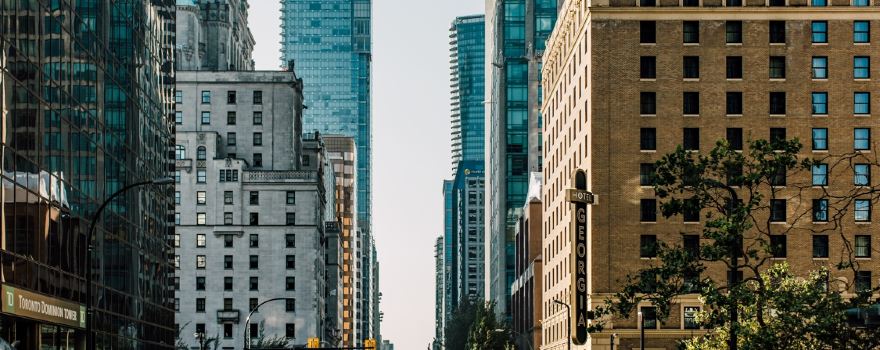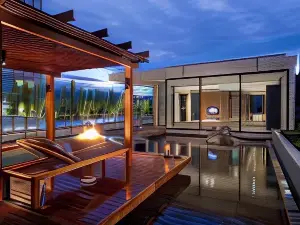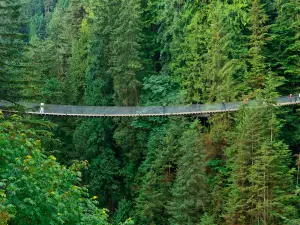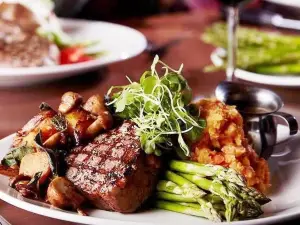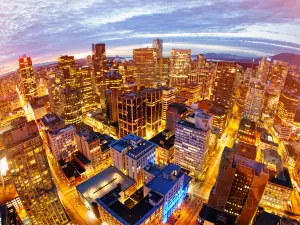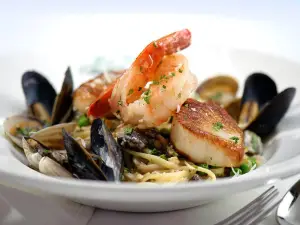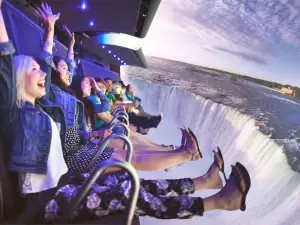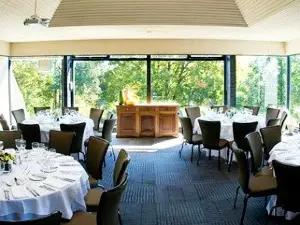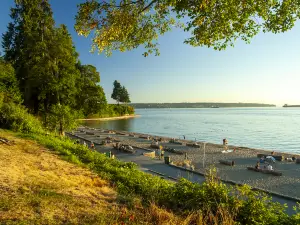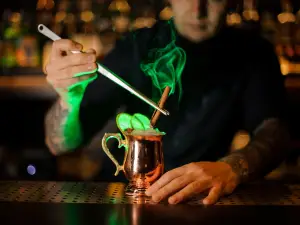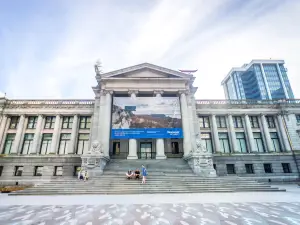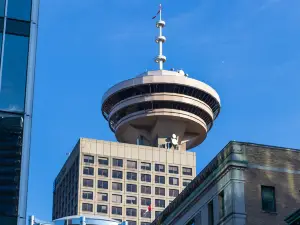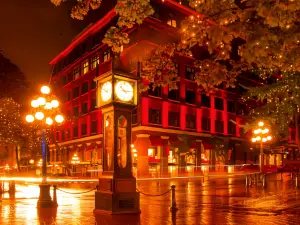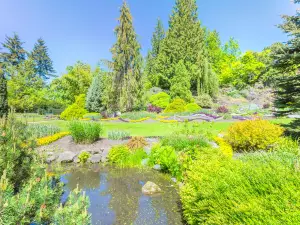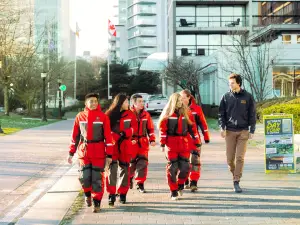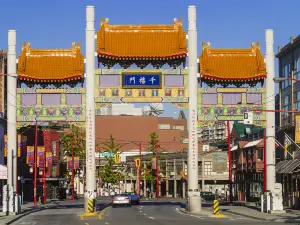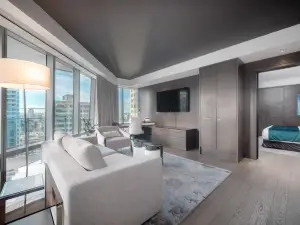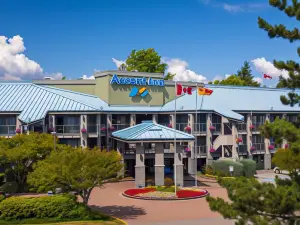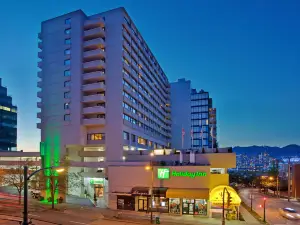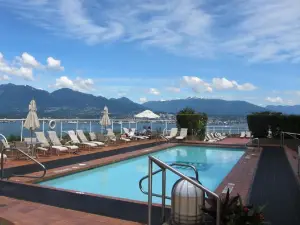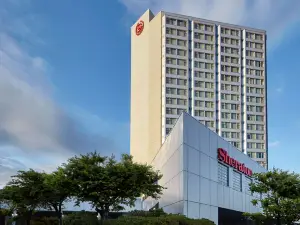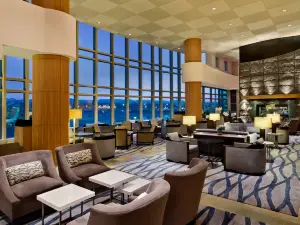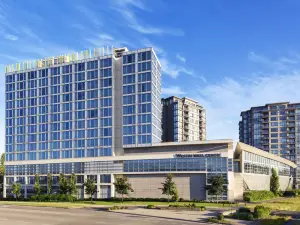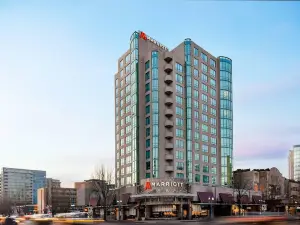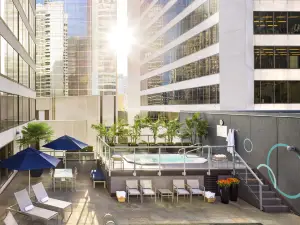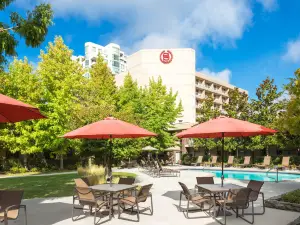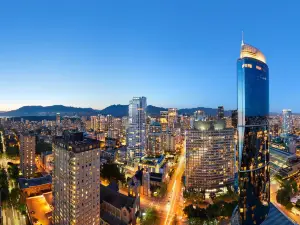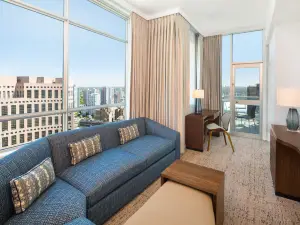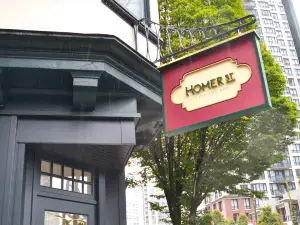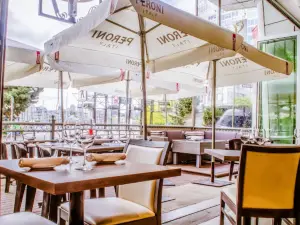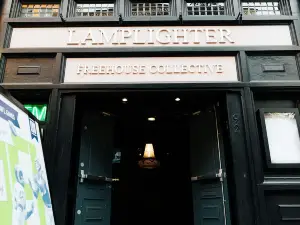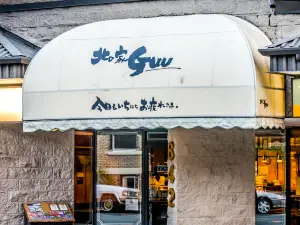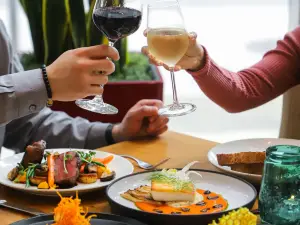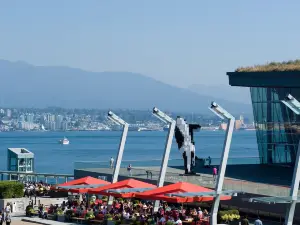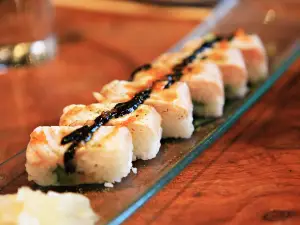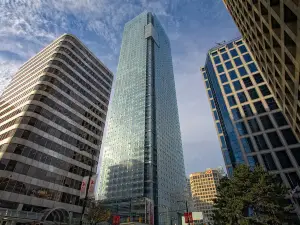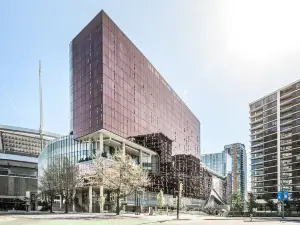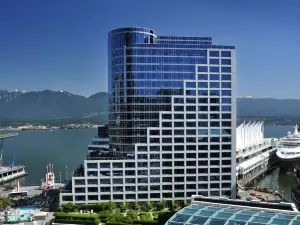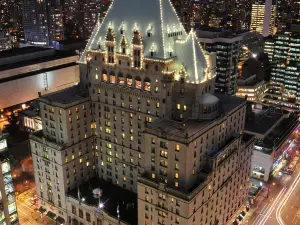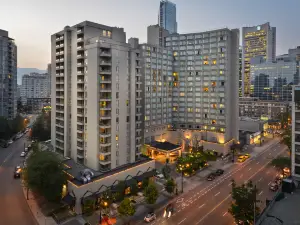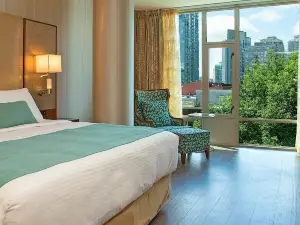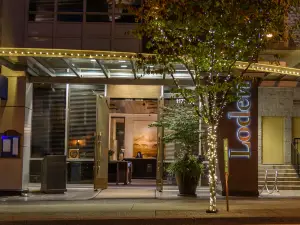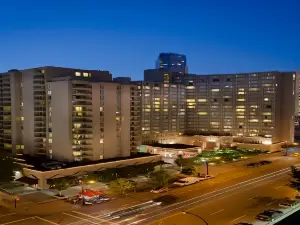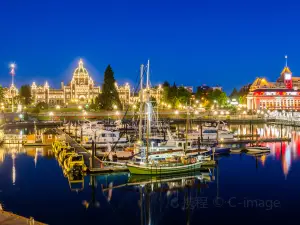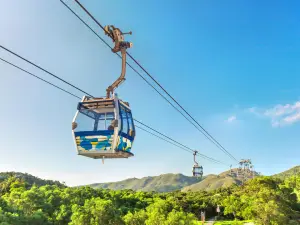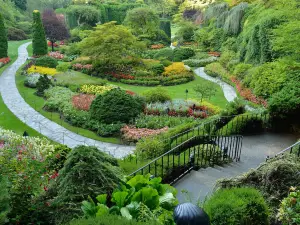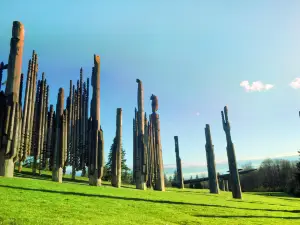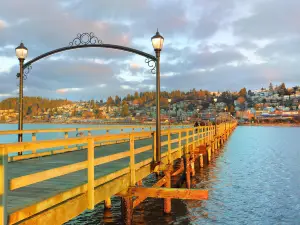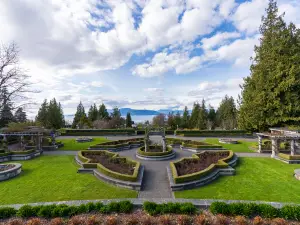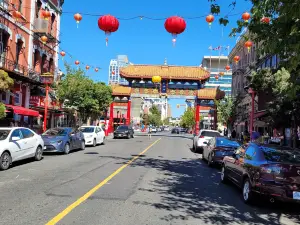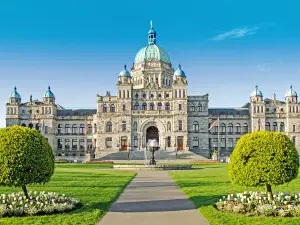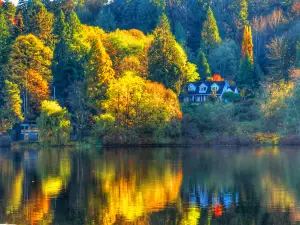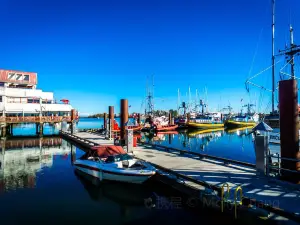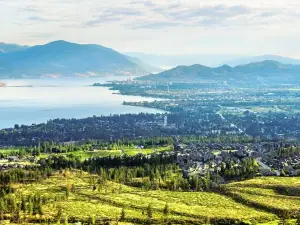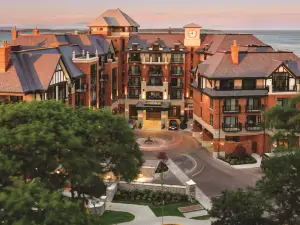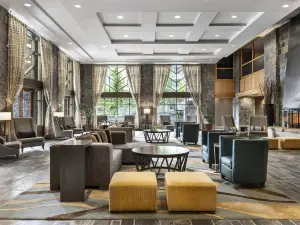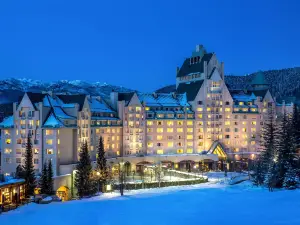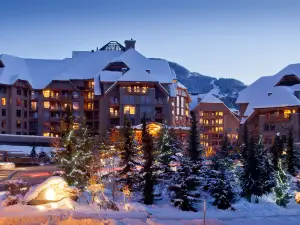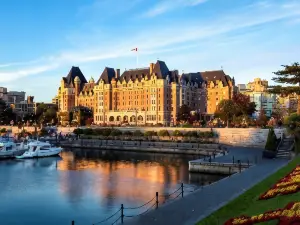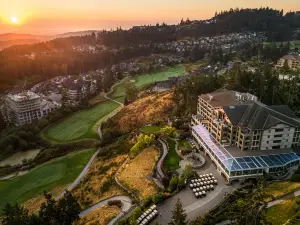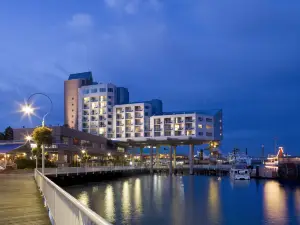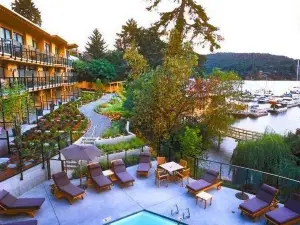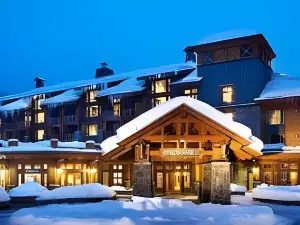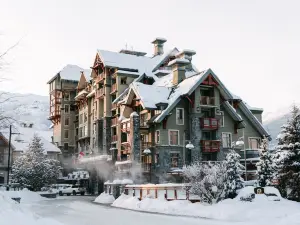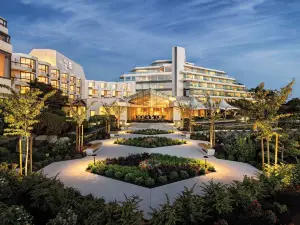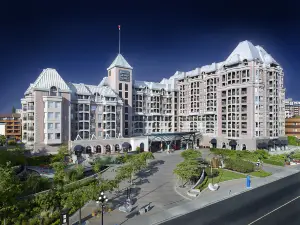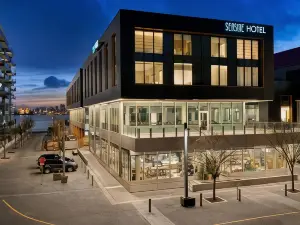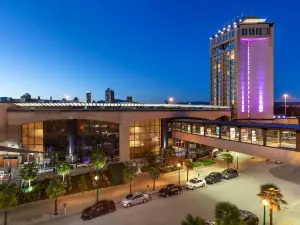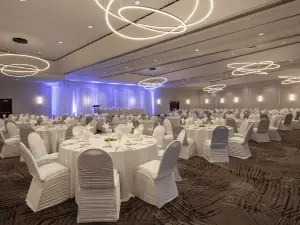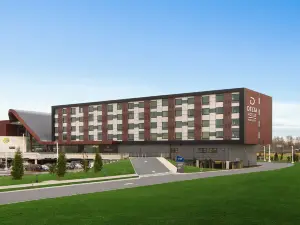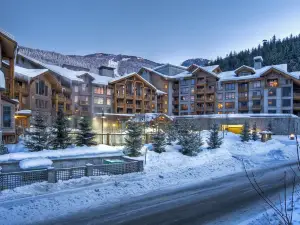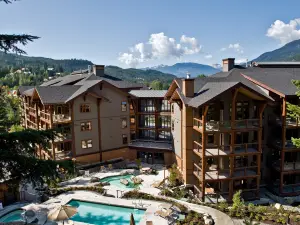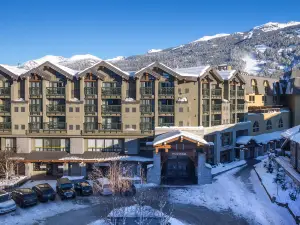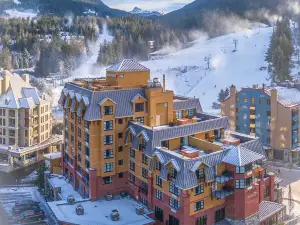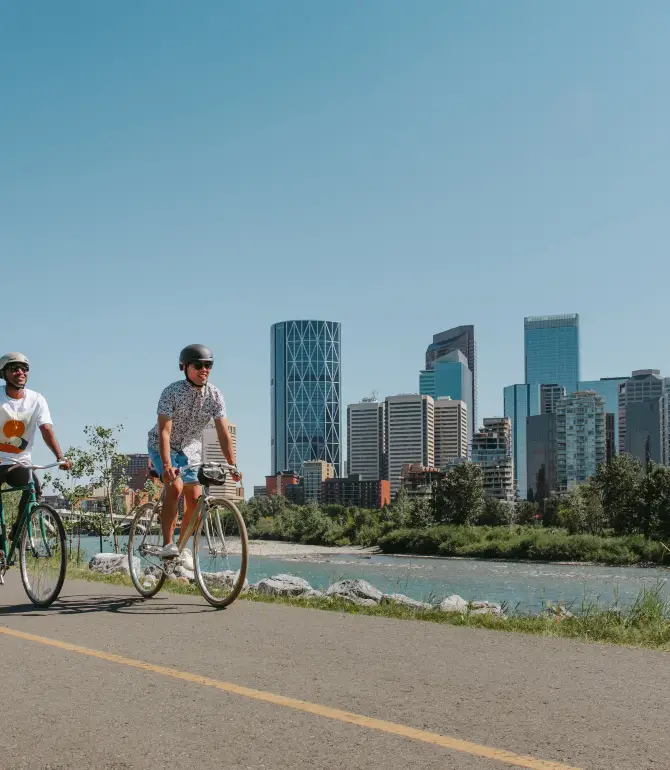Things to Do in Vancouver in 2025 - Top Attractions, Local Food, Hotels & Travel Tips (Updated June 2025) | Trip.com
About Vancouver
Recommended trip: 3–5 day(s)
Recommended trip: 3–5 day(s)Current Weather Conditions
Vancouver Local Experiences Map

Trending in Vancouver
Vancouver Local Travel Guide 2025
Vancouver Brief Guide
Vancouver, nestled between the Pacific Ocean and the Coast Mountains, is a city where urban culture meets nature's splendor. Known for its stunning landscapes, from the lush Stanley Park to the snowy peaks of Grouse Mountain, Vancouver offers a unique blend of city life and outdoor adventure. Its multicultural fabric weaves together influences from around the world creating a vibrant mix of cultures, cuisines, and festivals. Whether you're exploring the historic streets of Gastown, savoring fresh seafood at Granville Island, or hiking through ancient forests, Vancouver promises an unforgettable experience. With its mild climate, world-class dining, and endless activities, it’s no wonder this Canadian gem is often ranked among the best places to live and visit.
Vancouver Must-try Local Experiences
1. Wander Stanley’s Seawall Walk or bike Stanley Park’s seawall, where First Nations totem poles stand and Third Beach meets cedar forest. Paddle False Creek, spotting seals from Jericho Sailing Centre, or relax on Kitsilano Beach with downtown views. These coastal paths blend green escapes and Pacific breeze, inviting families or solo wanderers to breathe Vancouver’s mix of wild and urban, from salty air to wave splashes. 2. Climb Grouse’s Peaks Ride Grouse Mountain’s cable car for views over English Bay, or cross Capilano Suspension Bridge above a rainforest canyon. Hike or zip-line through Grouse Mountain. These peaks and forests, close to downtown, mix thrills and calm, perfect for adventurers or kids chasing nature’s rush, with lookouts framing city towers against snowy ridges. 3. Follow Vancouver's Foodie Trails Taste sockeye salmon at Granville Island Public Market, where stalls brim with spot prawns, or grab steamed buns in Chinatown’s Keefer Street shops. Bite into Dungeness crab at Gastown’s cozy restaurants, then sip craft beers on Main Street, paired with steaming dumplings. These food hubs weave Vancouver’s coastal catches and global zest, tempting with hot plates, market buzz, and hoppy pours. 4. Trace Gastown’s Past Wander Gastown’s Water Street, where heritage lamps glow and the Steam Clock chimes past Blood Alley. Visit UBC’s Museum of Anthropology for Musqueam totem poles and cedar carvings, or browse Bill Reid Gallery’s Haida gold jewelry. These spots trace Vancouver’s roots, from Indigenous lands to frontier days, offering history fans or groups a walk through time in wood and stone. 5.Admire Indigenous Arts See indigenous art and Kwakwaka’wakw masks at UBC’s Museum of Anthropology, or catch a play at Granville Island’s Arts Club Theatre. Wander West End’s Roedde House for local watercolors of Coal Harbour. These creative spots spark wonder, blending Indigenous heritage with modern stages, ideal for art lovers or kids eyeing colorful totems and live performances under soft stage lights. 6. Join Local Festival Fun Join Vancouver Pride’s march through West End’s Davie Street, where rainbows wave, or stroll the Cherry Blossom Festival at VanDusen Garden for pink petals and food stalls. Winter’s Dine Out Vancouver brings chef menus to local restaurants. These events light up the city with dragon dances or local bands, inviting families or travelers to share block parties and coastal flavors. 8. Paddle Through English Bay Kayak English Bay from Ecomarine, gliding past ferries, or paddleboard near Science World’s glowing dome. Picnic on Jericho Beach with North Shore mountain backdrops, or bike Stanley Park’s seawall to English Bay’s sunset. These waterfront spots mix water and shore, letting active travelers or relaxed groups splash, eat, or roll along Vancouver’s Pacific edge under wide skies. 9. Marvel at Whale Watching Board a whale watching tour from Granville Island, sailing the Strait of Georgia to spot orcas, humpbacks, and seals. Guides share tales of Vancouver’s marine life as waves lap and gulls soar overhead. These 3-5 hour quests, best from April to October, thrill families or nature fans, weaving Pacific wonder with coastal horizons under vast, salty skies. 10. Enjoy Green Urban Retreats Explore Queen Elizabeth Park’s rose gardens, or hike Lynn Canyon Park’s trails to Twin Falls’ crashing waters. Rest by Dr. Sun Yat-Sen Classical Garden’s pagoda paths, koi swimming below. Hike through towering Douglas firs and cedar groves on fern-carpeted trails in Pacific Spirit Park. These parks blend blooms and waterfalls, offering calm for picnics or trail walks showing Vancouver’s quiet side amid urban bustle. 11. Explore Vancouver's Diverse Neighbourhoods Tour Chinatown’s Keefer Street herbal shops for tales of 1880s settlers, or visit Punjabi Market’s Main Street stalls, alive with bhangra beats, samosas, and silk saris. Browse Davie Village’s Little Sister’s Bookstore or rainbow-crossed Breka Bakery & Café. Street murals tie these neighborhoods, pulsing with Vancouver’s global heart, inviting explorers to taste curries or shop trinkets. 12. Capture Stunning City Views Climb Harbour Centre’s Vancouver Lookout for 360° shots of Stanley Park and Lions Gate Bridge, or bike Prospect Point’s ocean-framed skyline. Snap photos from Granville Island’s Dockside Patio, IPA in hand, or catch SeaBus views across Burrard Inlet. These perches mix high and low angles, perfect for capturing Vancouver’s glass towers and blue waves. 13. Embrace Vancouver’s Seasonal Blooms and Colors Pedal through Stanley Park’s cherry blossoms in spring, where pink petals frame seawall views, or join the Vancouver Cherry Blossom Festival’s picnic under Queen Elizabeth Park’s blooms. In fall, hike Pacific Spirit Park’s trails as maple leaves turn gold and crimson. From late March to May, sakura dazzles; come October, forests glow.
Vancouver Must-see Attractions
Vancouver is a vibrant city rich in natural beauty and cultural heritage, featuring attractions like the Stanley Park, Capilano Suspension Bridge Park, Granville Island, Canada Place, and the immersive FlyOver Canada experience, all contributing to a unique and diverse visitor experience.
Vancouver Food Guide
Vancouver's food scene boasts an array of seafood delights including the succulent Canadian Atlantic lobster, the sweet-flavored Alaskan King Crab, versatile Atlantic salmon prepared with unique methods, and fresh oysters from Glacier Bay, each offering a distinctive taste experience.
Vancouver Transportation
Vancouver’s gateways connect globally and locally—air, rail, bus, ferry, or road. Vancouver International Airport (YVR): 13 km south in Richmond, it’s Western Canada’s hub for international and domestic flights. SkyTrain’s Canada Line zips to downtown’s Waterfront Station in ~25 minutes—affordable, frequent. Taxis, Uber, or Lyft offer direct rides, pricier but door-to-door; book via apps. Free Wi-Fi, dining, and lounges ease layovers. Wheelchair-accessible shuttles, priority lanes, and sensory kits support all travelers. Kiosks sell transit passes for instant city access. Pacific Central Station: Downtown’s rail and bus hub. VIA Rail links to Edmonton (24 hrs) or Jasper (17 hrs); Amtrak Cascades runs to Seattle (~4 hrs). FlixBus and Rider Express serve Calgary or Kelowna—book online. SkyTrain’s Main Street-Science World station is a short walk; signage guides transfers. Canada Place Cruise Terminal: Downtown’s waterfront hub at 999 Canada Place. Waterfront Station (Expo/Canada Lines) is a 2-minute walk; hop to downtown hotels or YVR in 25 mins. Taxis/Ubers queue outside arrivals BC Ferries: Sail from Vancouver Island (Victoria, ~1.5 hrs) or Gulf Islands (e.g., Bowen, ~20 mins) to Tsawwassen or Horseshoe Bay terminals. Foot passengers board fastest; cars need reservations via bcferries.com. Shuttles or SkyTrain connect to downtown. Weather delays can happen more frequently in winter, check for alerts. By car: Highways 1 and 99 lead to Vancouver—U.S. border crossings (Peace Arch, ~45 mins if the traffic is light) need passports.
Vancouver Where to Stay
Vancouver is known for its vibrant and diverse accommodation options, catering to all types of travelers. Its layout features distinct districts with unique characteristics, making selecting a place to stay both exciting and strategic based on one’s itinerary. Key areas include bustling downtown spots, serene outskirts, and everything in between, offering varied experiences from urban explorations to natural getaways.
Vancouver Best Time To Visit
Vancouver’s seasons offer distinct moods—pick your pace. Spring or fall balance weather and space; summer’s for festivals, winter’s for deals. Spring (Mar-May) blooms with cherry blossoms at VanDusen Garden—mild, quieter, great for hikes. Summer (Jun-Aug) shines—Vancouver Pride, Bard on the Beach, and seawall crowds bring energy, though it’s busy. Fall (Sep-Nov) cools—Fringe Festival and UBC’s apple fest suit calm walks, with fewer tourists. Winter (Dec-Feb) slows—Dine Out Vancouver and holiday markets at Jack Poole Plaza glow, ideal for cozy trips.
Vancouver Travel Tips
1. Budget for Extra Costs British Columbia’s sales tax bumps up hotel, dining, and transit bills—listed prices exclude it. Restaurant tips (15-20%) are standard too. Plan extra for meals and lodging to cover these add-ons. Cards work everywhere, but carry small bills for tipping baristas or servers. 2. Use a Compass Card for Transit Get a Compass Card at SkyTrain stations or pharmacies for buses, SkyTrain, and SeaBus—it’s cheaper than single tickets. Load daily or weekly passes via the TransLink app; tap in and out. Avoid rush hour (7-9 AM, 4-6 PM) at Waterfront Station—trains pack tight. Apple/Google Pay works on buses/SkyTrain too (no card needed for short trips). 3. Book Outdoor Tours in Advance Kayaking False Creek or hiking Grouse Mountain books fast in summer. Secure spots through official website weeks ahead—online calendars show availability. Walk-ins are tough July-August; spring’s quieter. Check weather—rain cancels some trips, so have indoor plans. 4. Bike Smart with Mobi Mobi by Shaw Go bikes are perfect for Stanley Park’s seawall—grab a pass via their app. Stay in bike lanes; cars edge close on Denman Street. Helmets are required—fines are rare but possible. Spring or fall rides beat summer crowds and winter drizzle. Return bikes to docks to avoid extra charges. Stanley Park’s seawall bans Mobi bikes on summer weekends (too busy). 5. Pack for Wet Weather Vancouver’s rain hits year-round—winters soak (0-8°C, 32-46°F), summers sprinkle (18-25°C, 64-77°F). Bring waterproof jackets, windproof umbrellas, and non-slip shoes for seawall strolls. Layer for warm days. Compact rain ponchos will save you from sudden showers. 6. Reserve Restaurants Ahead Miku’s sushi, Vij’s Indian, or Hawksworth’s Pacific dishes need bookings—use OpenTable or Tock a month out for dinner. Gastown’s Water Street spots like Flying Pig take lunch walk-ins, but peak hours (6-8 PM) mean waits. Tip 15-20% via card terminals; it’s expected. Solo diners grab bar seats easier. 7. Stick to Crosswalk Signals Always wait for green lights, but especially on Robson or Granville—crossing against red can slow buses, and fines are possible. Watch for SeaBus shuttles turning wide on Hastings. Locals are fast at crossings; keep up or step right. Bikes must stop at reds too. 8. Check Ferry Schedules SeaBus to North Vancouver or ferries to Granville Island run often, but summer lines clog Lonsdale Quay—use bcferries.com or translink.ca for times. Foot passengers board quickest; cars need pre-bookings. Storms delay sailings—carry a SkyTrain backup plan. Early ferries are quieter for scenic rides. Harbour Air seaplanes is a scenic (but pricier) alternative to ferries. 9. Skip Unofficial Tours Guides hawking tours near Gastown’s Steam Clock or YVR may overcharge—book through trusted providors online. Read reviews; scams hit Stanley Park walks. Museum tickets (e.g., Museum of Anthropology) are cheapest direct from venues. Locals warn of “free” tours pushing paid add-ons. 10. Be Cautious on East Hastings at Night Downtown Eastside’s Hastings Street feels intense—homelessness and open struggles are visible there. Visit Chinatown’s Keefer Street in daylight; skip alleys after dark. Keep bags close, avoid flashy gear. Granville or Commercial Drive are safer for night walks. Stick to busy areas for comfort.
Vancouver Useful Guide
English dominates Vancouver—signs, menus, and apps are clear. French appears on federal services (e.g., YVR signs, Canada Post), but daily use is minimal. Over 200 languages thrive in neighborhoods—Mandarin, Cantonese, Punjabi, Tagalog, and Spanish hum in Richmond’s markets or Commercial Drive’s shops.
Trip.Best: Vancouver
Things to do in Vancouver
What to Do
FlyOver Canada
Rocky Mountaineer
VanDusen Botanical Garden
Vancouver Lookout
Chinatown
Where to Stay
What to Eat
Vancouver Moments: Through Travelers' Eyes

Stanley Park Vancouver, Canada.

Beautiful Vancouver: A Two-Day City Walk Adventure

5-Day New Year's Trip to Canada

Time to explore Canada 🇨🇦

Must-visit Hidden Gems in Vancouver

If you can only stay in Vancouver for one day, I suggest you don't miss Stanley Park

6-Day Canada Itinerary: A Super Detailed Guide

The Land of Maple Leaves, Nature's Masterpiece Painting the Landscape
Best of Vancouver
Site Operator: Trip.com Travel Singapore Pte. Ltd.
